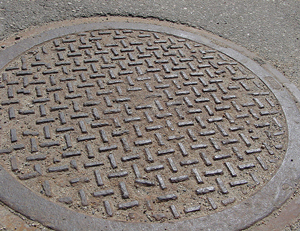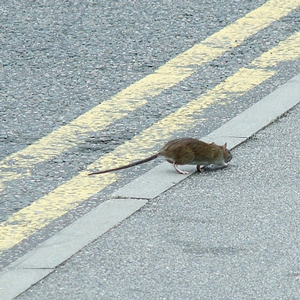When the Rodents Come From “Next Door”
By Chris Williams on November 4, 2013.

Question
We have a very strange situation. About once a year, we find a rat in our basement. A pest control company told us that the rats were coming from the sewer system but the technician refused to treat, or even open, the manhole in front of our house. Isn’t that his job?
Answer
I don’t know exactly how the technician determined that the rats were from the sewer system, but it isn’t unusual for sewer rats to find breaks in drain pipes and burrow up into yards or enter homes through basement floor drains.
Regardless, your technician was right in refusing to enter the manhole. A manhole is considered to be a hazardous “confined space” according to the Occupational Safety and Health Administration and a worker cannot enter a manhole without a permit, specific training. and safety gear.
Even if your technician was qualified to enter a manhole, he would need permission from the sewer authority. Pest control companies can often do very little for customers battling sewer rats because a sewer manhole or vault outside of a property line is typically owned by a government sewer authority. A pest control company can’t open, or treat, or bait these sewers without their cooperation.
 We often get called to handle frustrating rodent problems where the source of the rats or mice is on an adjacent property over which we, and the customer, have no jurisdiction. These are some cases where the “neighbors” are the source of the rats or mice:
We often get called to handle frustrating rodent problems where the source of the rats or mice is on an adjacent property over which we, and the customer, have no jurisdiction. These are some cases where the “neighbors” are the source of the rats or mice:
- Run-down inner-city properties can be heavily infested and can regularly contribute rodents to adjacent properties.
- New developments in rural or suburban areas often lead to migration of mice out of the woodland or grassland that was cleared for development.
- In cities, rats may use the tunnels of subways or the vaults of electric, phone, and other utilities for travel, nesting, or harborage sites – and then travel out of the system to feed nearby.
- Junkyards can be home to large populations of rodents that nest in vehicles or elsewhere, feeding on scraps and insects.
- Farms, livestock facilities, grain storage, and other agricultural sites can support large populations of mice and rats, which can migrate to nearby properties.
In rare cases, we may get permission from the adjacent property or utility to inspect, and maybe even treat, their site. More often, we simply have to modify our customer’s control program to take into account the increased rodent pressure from “next door.” Sometimes in these cases, we have to reluctantly tell our customer that he may never be rodent-free, that the best we can do is to manage the rodent population at a low level.
Photo credit: The Tire Zoo / Foter.com / CC BY